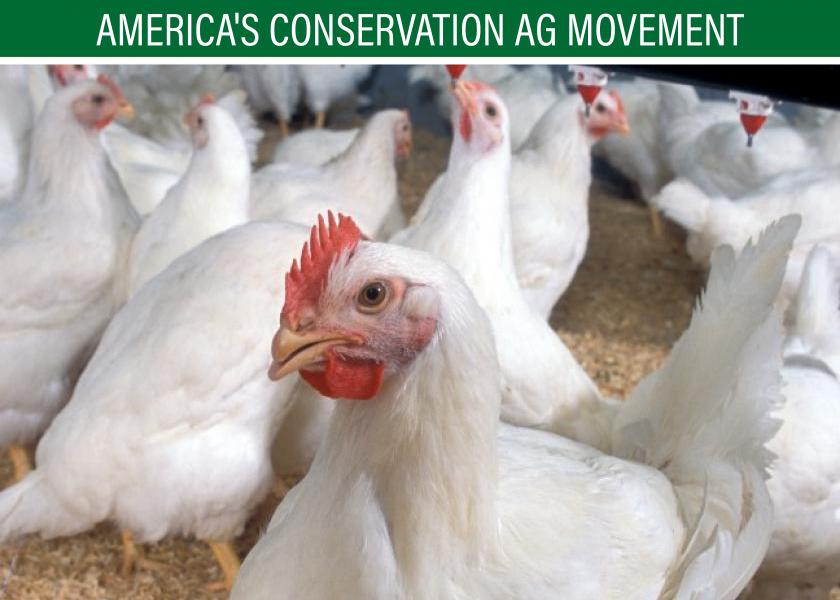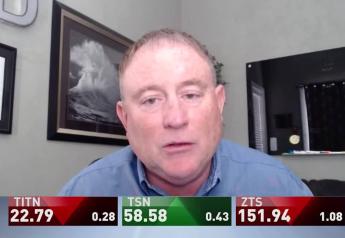Diversifying Adds To Sustainability

This article was written by Debbie Borg. She and her family produce beef, chicken and row crops in northeast Nebraska, near Allen. Debbie is a Conservation Steward in the Bazile Creek watershed, helping farmers evaluate conservation farming practices on behalf of America's Conservation Ag Movement, a Trust In Food initiative.
Sustainability is such a buzz word today and means so many different things to different people and industries. And now we have to talk about climate smart ag, too!
But I believe if you ask a farmer, most likely they will tell you that sustainability means passing the farm on to the next generation.
Looking back to 2018 when we signed a letter of intent to build a chicken barn for the Costco project in Nebraska, we didn’t write a business plan and detail all that we were doing to contribute to the sustainability of our fifth-generation family farm operation.
At the time, it wasn’t a real hard decision to sign on. My husband and I both grew up doing animal chores and have been feeding cattle ever since. We understood the daily chore commitment. We told people that we were doing it for our kids, and I want to delve into what the decision we made three years ago has brought to our farm and family.
 First, it has brought a lot of change. Most importantly, it has provided opportunity – the opportunity to offer a paying job to our oldest daughter, Hannah, after college graduation. Just recently, our other daughter, Heidi, joined us. Had we not signed on as a contract grower for Costco, both daughters would have had to find careers elsewhere – away from the farm.
First, it has brought a lot of change. Most importantly, it has provided opportunity – the opportunity to offer a paying job to our oldest daughter, Hannah, after college graduation. Just recently, our other daughter, Heidi, joined us. Had we not signed on as a contract grower for Costco, both daughters would have had to find careers elsewhere – away from the farm.
Back to change. We now have daily chores with rigid time schedules. Unlike with cattle feeding, where timing isn’t quite as critical, chickens demand being in the barn and eating at the same time every morning, every day of the year. But that’s provided another opportunity. Adding chickens has given us a resource for additional plant nutrients, thanks to the chicken bedding. We have had access to poultry litter for over 40 years in our area. In fact, our family used poultry manure when the local provider had to give it away. Today, the demand for poultry litter is high and generally costs more than what the NPK nutrients are valued at. However, I like to say that chicken manure is magic. It does things that commercial fertilizer doesn’t do, and that’s what has also driven up the cost in this area of northeast Nebraska.
Getting back to sustainability, as farmers learn more every year, we have seen the benefits of using both cattle and chicken manure as plant nutrients. That has especially been the case as we have seen Mother Nature bring more extremes to our weather conditions. Soil that has been treated/covered with animal manure has more resilience.
We also know that circular economies result in increased sustainability. I often share the story that we grow the corn that we feed the cattle, then we spread the manure on the field to nourish future crops to feed the cattle. Around and around it goes. People outside of farming say, “Wow, I didn’t understand that, and your transportation costs are reduced, too and your carbon footprint is reduced.” Yes, that is correct. Here in eastern Nebraska, the crops grown to feed the livestock are cultivated real close to where they are consumed, and the animal manure is then applied on nearby fields as well.
It has been an interesting journey over the last three years with some major bumps and turns, as a result of adding chickens to our farm. But when we focus on the increased sustainability, our goal to leave the land better than it was when we got it – and pass it on to the next generation – it definitely has been worthwhile.







